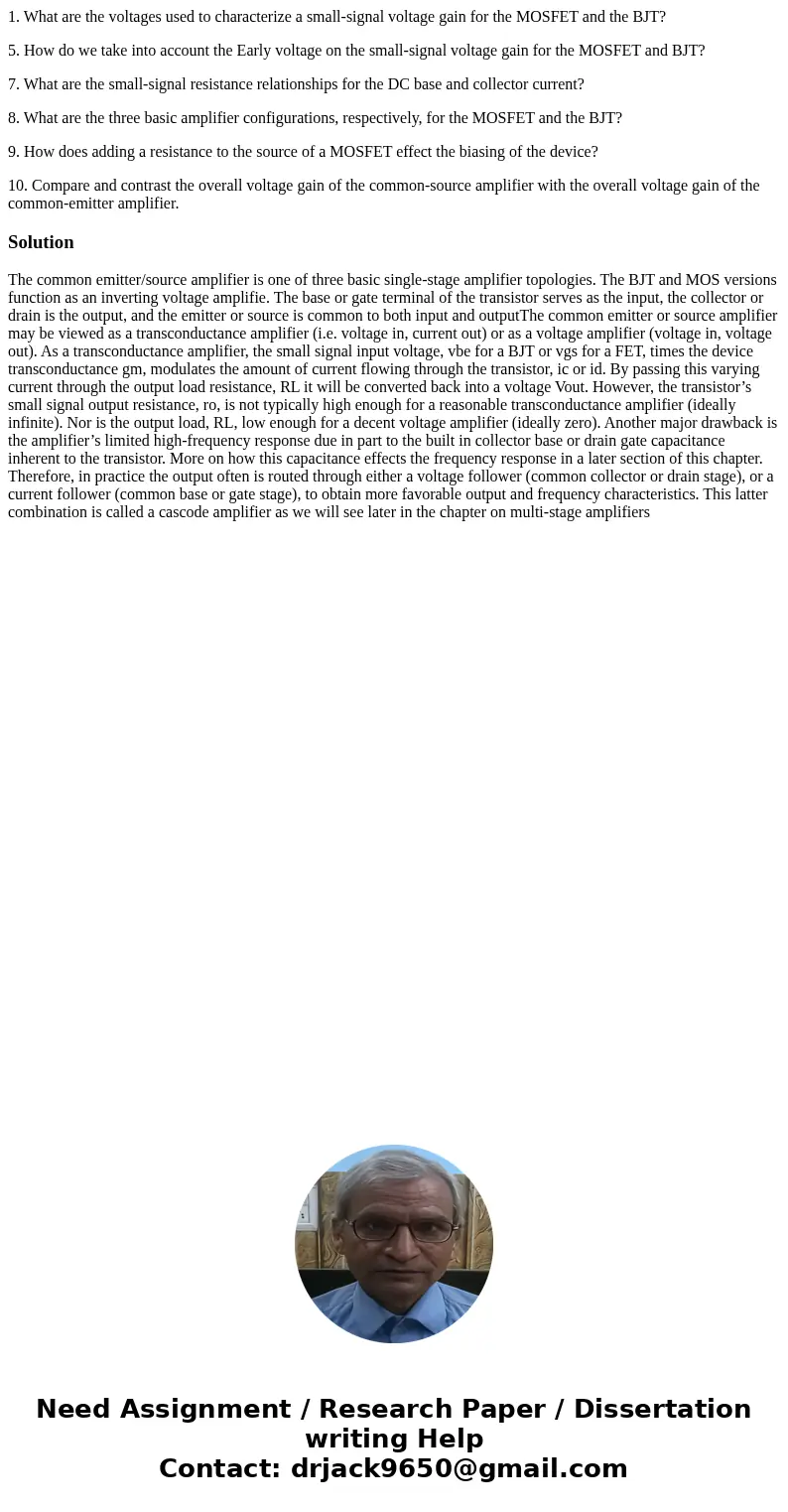1 What are the voltages used to characterize a smallsignal v
1. What are the voltages used to characterize a small-signal voltage gain for the MOSFET and the BJT?
5. How do we take into account the Early voltage on the small-signal voltage gain for the MOSFET and BJT?
7. What are the small-signal resistance relationships for the DC base and collector current?
8. What are the three basic amplifier configurations, respectively, for the MOSFET and the BJT?
9. How does adding a resistance to the source of a MOSFET effect the biasing of the device?
10. Compare and contrast the overall voltage gain of the common-source amplifier with the overall voltage gain of the common-emitter amplifier.
Solution
The common emitter/source amplifier is one of three basic single-stage amplifier topologies. The BJT and MOS versions function as an inverting voltage amplifie. The base or gate terminal of the transistor serves as the input, the collector or drain is the output, and the emitter or source is common to both input and outputThe common emitter or source amplifier may be viewed as a transconductance amplifier (i.e. voltage in, current out) or as a voltage amplifier (voltage in, voltage out). As a transconductance amplifier, the small signal input voltage, vbe for a BJT or vgs for a FET, times the device transconductance gm, modulates the amount of current flowing through the transistor, ic or id. By passing this varying current through the output load resistance, RL it will be converted back into a voltage Vout. However, the transistor’s small signal output resistance, ro, is not typically high enough for a reasonable transconductance amplifier (ideally infinite). Nor is the output load, RL, low enough for a decent voltage amplifier (ideally zero). Another major drawback is the amplifier’s limited high-frequency response due in part to the built in collector base or drain gate capacitance inherent to the transistor. More on how this capacitance effects the frequency response in a later section of this chapter. Therefore, in practice the output often is routed through either a voltage follower (common collector or drain stage), or a current follower (common base or gate stage), to obtain more favorable output and frequency characteristics. This latter combination is called a cascode amplifier as we will see later in the chapter on multi-stage amplifiers

 Homework Sourse
Homework Sourse